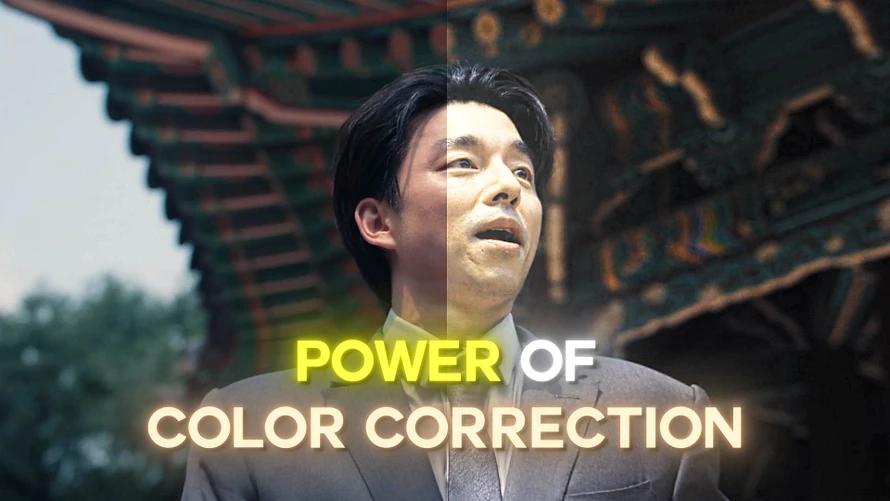The Power of Color Correction: Enhancing Visual Storytelling
In the world of video editing, color correction plays a pivotal role in transforming raw footage into a polished, professional piece of art. Whether you’re working on a film, a music video, or an advertisement, the power of color correction lies in its ability to evoke emotions, create atmosphere, and deliver a clear message. But what exactly is color correction, and why is it such a vital tool for filmmakers, editors, and content creators?
What is Color Correction?
Color correction is the process of adjusting the colors in your footage to ensure they are accurate, balanced, and consistent. This process involves fixing issues with exposure, contrast, saturation, and white balance to make the footage look more natural and cohesive. While it may sound technical, color correction is essentially about enhancing the visual appeal of the project and making sure the colors align with the desired mood or tone.
The Three Main Steps of Color Correction
-
White Balance Adjustment: One of the first steps in color correction is fixing the white balance. Incorrect white balance can make footage look too warm (yellow/orange) or too cool (blue). Proper white balance ensures that whites appear true to life, which sets the foundation for accurate color grading.
-
Exposure and Contrast: Correcting exposure and contrast ensures that the image has the right brightness and shadow details. It’s easy for footage to look either too dark or too bright, which can affect the visual clarity of important elements. Adjusting contrast also helps to add depth, making the image appear more dynamic and lively.
-
Saturation and Vibrancy: Saturation refers to the intensity of colors in the footage. Sometimes, footage can look washed out, while other times, colors may be too overpowering. Fine-tuning the saturation ensures that the colors pop without being overwhelming, leading to more aesthetically pleasing visuals.
The Impact of Color Correction on Visual Storytelling
Color correction is far more than just a technical process—it is an essential part of visual storytelling. The colors in a scene can set the tone for an entire narrative. Here are some ways that color correction enhances storytelling:
1. Evoking Emotion
Color has the ability to evoke powerful emotions. Think about the warm, golden hues of a sunset scene—those colors can make an audience feel nostalgic or at peace. On the other hand, cooler tones like blue and green may evoke feelings of sadness, mystery, or calm. Through color correction, you can manipulate the colors in your footage to create the right emotional response from your audience.
For example, a film about love might use warm tones like reds and oranges to create an intimate atmosphere. A thriller, on the other hand, could use desaturated colors or colder blues to create tension and unease.
2. Setting the Mood
The right color palette can help set the overall mood of a project. A bright, vibrant color palette may evoke a sense of joy and excitement, while darker, muted tones can make a scene feel more somber or intense. By adjusting the color balance, saturation, and contrast, color correction allows you to dictate the mood of your video.
3. Enhancing Aesthetics
Color correction also serves as a tool to enhance the aesthetics of the footage. By correcting any imbalances in color and exposure, editors can make sure that each shot is visually engaging. Colors that complement each other can be brought to life through color correction, while making sure that no part of the frame is distracting or out of place.
4. Consistency Across Shots
In most productions, the lighting and camera settings will vary from shot to shot, which can cause color discrepancies. Without proper color correction, these inconsistencies can break the flow of the narrative and make the video feel disjointed. By applying color correction, editors can ensure that the colors in every scene are consistent, providing a smooth and cohesive viewing experience.
Color Grading vs. Color Correction
While color correction ensures that the footage looks natural and balanced, color grading takes things a step further by manipulating the colors for creative purposes. Color grading involves applying a stylistic look to the footage—such as giving it a "vintage" or "cinematic" feel, or creating high-contrast looks. Together, color correction and color grading can transform your footage into something visually stunning and uniquely yours.
Conclusion: The Power of Color Correction in Visual Storytelling
Color correction is a powerful tool in the hands of content creators. It not only fixes technical issues in your footage but also helps tell a compelling visual story by evoking emotions, setting moods, and enhancing the overall aesthetic. When done correctly, color correction allows the footage to feel cohesive, immersive, and engaging.
Whether you’re an aspiring filmmaker, a YouTuber, or a social media influencer, mastering color correction will elevate the quality of your videos and allow you to communicate your vision more effectively. The next time you open your editing software, remember that color correction is more than just a technical task—it’s an art form that can change the entire narrative of your project.

